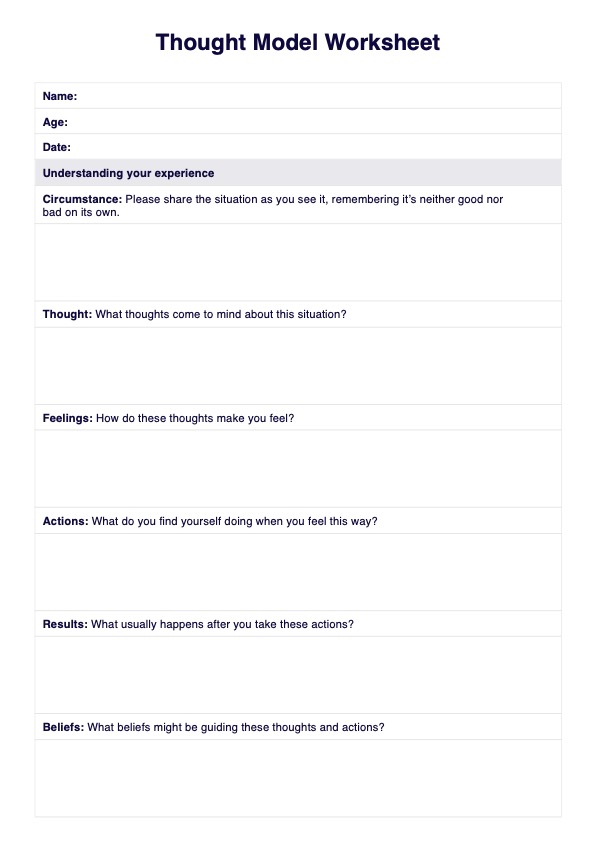A thought model is a framework used in cognitive therapy to identify and understand the relationships between thoughts, emotions, and behaviors, helping individuals modify problematic thinking patterns.

Thought Model Worksheet
Unlock the benefits of cognitive restructuring with our Thought Model Worksheet, designed to enhance therapy sessions and improve mental health outcomes.
Use Template
Thought Model Worksheet Template
Commonly asked questions
Model thinking is crucial as it allows individuals to systematically break down and analyze their thought processes, leading to more effective management of emotional responses and behavior patterns.
A thought record sheet is a tool that helps individuals document their automatic thoughts, emotions, and the contexts in which they occur, facilitating deeper insight and cognitive restructuring.
EHR and practice management software
Get started for free
*No credit card required
Free
$0/usd
Unlimited clients
Telehealth
1GB of storage
Client portal text
Automated billing and online payments











